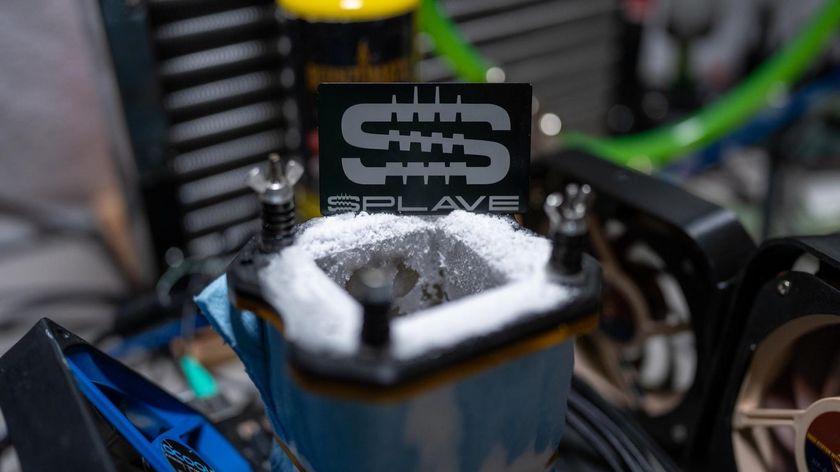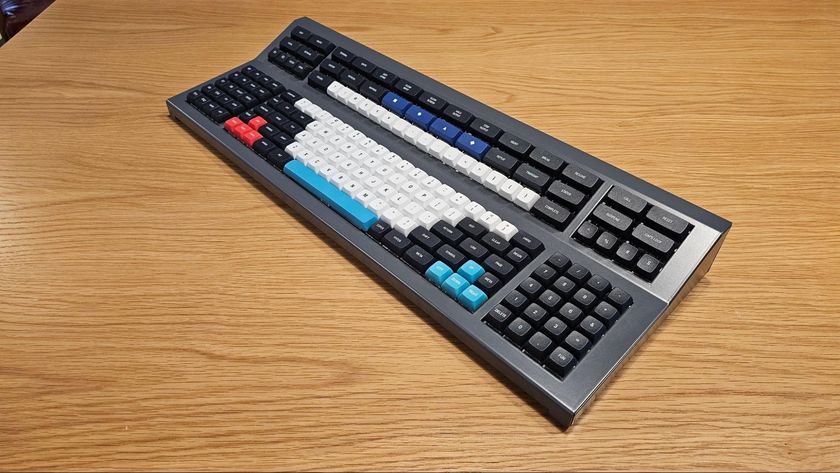Overclocking Marathon Day 3 - A Budget Build
Overclocking Journey And Final Settings
Our overclocking journey was a mix of happy success and ego-bruising disappointment. While we were able to overclock our little e4300 an impressive 75% - from a stock 1.8 GHz to a stable overclock of 3.15 GHz - we were humbled that we couldn't get it to go a bit further. We had our hearts set on the 3.4 GHz range and we'd even hoped for more, but alas, you can't always get what you want.
On the plus side, we're pretty sure the 3.15 GHz will gain the budget overclocking system an easy price/performance victory vs. the $3000+ systems it's up against, and we did gain a bit of knowledge about overclocking the e4300 that we're happy to share with you.
| Overclocked Component Settings | |
|---|---|
| Processor | Intel Core Duo e4300, 3.15 GHz, 1400 FSB, 2 MB Cache |
| Final Overclock | 3.15 GHz: 9x 350 MHz FSB, 1.45 Volts Core |
| Motherboard | ASUS P5B, BIOS: 1604 |
| Final Overclock | PCI-E SPP & MCP: 3150 MHz @ 1.45V |
| RAM | Wintec Ampo PC2-6400, 2x 1024 MB, CAS 5.0-5-5-16 |
| Final Overclock | 750 MHz Data Rate, CAS 4.0-4-4-11, 1.9 Volts |
| Graphics Card | EVGA GeForce 8800 GTX, 610 MHz GPU, 2020 MHz RAM |
Our initial attempt on the P5B was extremely encouraging. At stock CPU voltage and a tiny 0.5v bump in North Bridge voltage, with some loose 5-5-5-16 memory timings, we upped the FSB from the stock 200 MHz to a nice 333 MHz. To our surprise, the system booted as smooth as butter to 3.0 GHz with almost no effort at all! We we're sure we'd had a real overclocking champ on our hands at this point.
Things progressed smoothly up to an FSB speed of 350 MHz before we hit a wall. Increasing CPU and Northbridge voltages didn't seem to make any difference. At this point we decided to lower the e4300's multiplier so that we could test the FSB limits of the motherboard. The Asus P5B allows for that adjustment, so we lowered the CPU multiplier from 9x to 7x.
At this point we could move further, but it seemed only at odd numbers: a 351 MHz front side bus speed booted, but 352 didn't. 353 worked, but not 354. In this manner we crawled up to 370 MHz for a core speed of 3330 MHz. Anything over 370 wouldn't boot and forced us to clear the CMOS, which is a real pain on the P5B when the jumper is covered by a two-slot video card like the 8800 GTX.
Stay On the Cutting Edge: Get the Tom's Hardware Newsletter
Get Tom's Hardware's best news and in-depth reviews, straight to your inbox.
Current page: Overclocking Journey And Final Settings
Prev Page A Cautionary Tale: The BIOS Flash Gone Wrong Next Page Overclocking Journey And Final Settings, Continue-
placeing motherboard had a Asus p5vd2-x replace with Asus p5b. i check on the pcu it intel 631 and memory,the hard drive will it work but will slower?Reply











